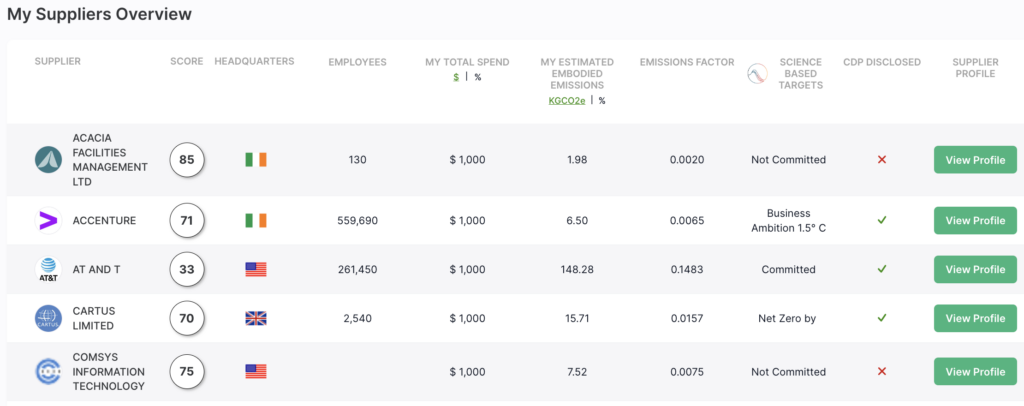Did you know you have superpowers to knock down climate change?
Well, here in this post we’ll unleash some powerful weapons you can leverage to combat global warming – from the inside.
Ready to turn into a climate hero?
Empower your workforce
Have you ever looked at your staff as an invincible carbon-busting army?
Teamwork is one of the aces up your sleeve to win this tricky game. There are several ways a victorious business leader can engage the organisation workforce in climate action.
You may have heard that knowledge is power. That’s why it’d be a good idea to provide educational resourcs for your employees’ brains to feed on. In this end, it’ll be part of their personal development.
It can be as simple as keeping a swipe file on your shared drive where you can add links to blog posts (like this one for example!), whitepapers, slides, etc, including tips on how they can reduce their carbon footprint.
On top of that, building a more innovative team will help you relieve your carbon burden. That’s because you’ll engineer climate-friendly products and solutions.
But how can you achieve this?
Successful companies such as Google foster people’s creativity by encouraging their personnel to come up with new ideas without fearing rejection. To add to that, diversity is another essential force driving both sustainability and innovation of your squad.
Another straightforward strategy would be to support sustainable commuting, (e.g. cycling, public transport, car sharing) and/or remote working whenever possible. According to the International Energy Agency (IEA), letting as many people as possible worldwide work from home just once a week would save as much C02 emissions as those released by Greater London in a year.
You could also spark some healthy competition by launching a climate gladiator monthly award. This will boost your troops’ morale and speed up their shift to low-carbon behaviours.
Exterminate your nearest carbon enemies
Once you’ve trained your valiant soldiers, head over with your legion to the battleground for a crusade against your Scope 1 & 2 emissions.
Scope 1 emissions
This is your simplest eco-battle you’ll have to combat as Scope 1 emission sources are within your control.
For instance, promoting a greener commute (see above) is a painless way to decrease your Scope 1 carbon footprint. You could even travel one step further – if you own a fossil fueled vehicle fleet, you could convert it to an electric one (which would then fall into your Scope 2 emissions- see below).
Are you still relying on coal boilers for heating up your premises? Just switch to natural gas or biomass-fired systems.
Scope 2 emissions
While you don’t have full control over your Scope 2 emissions sources, you can still influence their reduction to some extent.
A typical example is the energy you purchase from the grid. So, the first step would be to make sure you use only clean power. If not, consider switching to a greener energy supplier providing 100% renewable energy.
Ally with your suppliers
With a coordinated task force, you should be able to overcome Scope 1 and 2 emissions barriers.
But you’d still be left with the Scope 3 emissions front to break through. For some businesses, these are responsible for up to 95% of the total carbon footprint.
For this reason, winnig the war against climate change will require an alliance with your suppliers.
So, how can you engage them in this struggle? There are two major superpowers you can use: communication and technology.
Communication
Start with the easiest tactic – ask them to share carbon data.
No need to hire 007 agents or perform CIA-style interrogations. Just send a simple and peaceful questionnaire to at least 80% of your existing suppliers, quizzing them about how much they’re emitting and what they’re doing to tackle their carbon footprint. Also, it makes sense to engage first with those supplying your company directly (ie tier 1).
So, what if one of your suppliers refuses to disclose any information on their carbon footprint?
One option would be to replace it with a mroe collaborative and greener alternative. But that may be difficult to find. In that case, just challenge them to be more transparent. The more companies doing that, the easier it’ll be to sway a supplier to change its attitude.
Technology
Nope, we’re not talking about undetectable drones or hypersonic missiles. It’s more about the harmful yet potent combination of AI and machine learning.
That’s what Ditch Carbon’s software is based upon. Our planet-saving mission is to give you a hassle-free estimation of your supply chain’s carbon footprint.
No need to hire costly consultants. No need to waste time and money with complex calculations. Just send us the data you’ve got (e.g. purchased invoices, reports).
Our climate intelligence will process your inputs along with other data (such as industry reports, life cycle assessments (LCAs), scientific papers, etc) to provide SECR compliant estimates.
What will you get in return?
- A list of top carbon contributors
- A detailed map of your emissions sources, by scope and category
- Valuable advice on how to ditch your supply chain’s carbon footprint
Also, thanks to a dynamic approach, our smart model will update its results whenver there’s a change in the input data.
Anyway, if you’re eager to flex your climate muscles, check out our white paper on how to reduce your Scope 3 emissions.
Ready to become a climate avenger?
Get in contact with us today to calculate your supply chain emissions as part of our free trial. Just pick a time that suits you and we’ll get in contact right away >>

